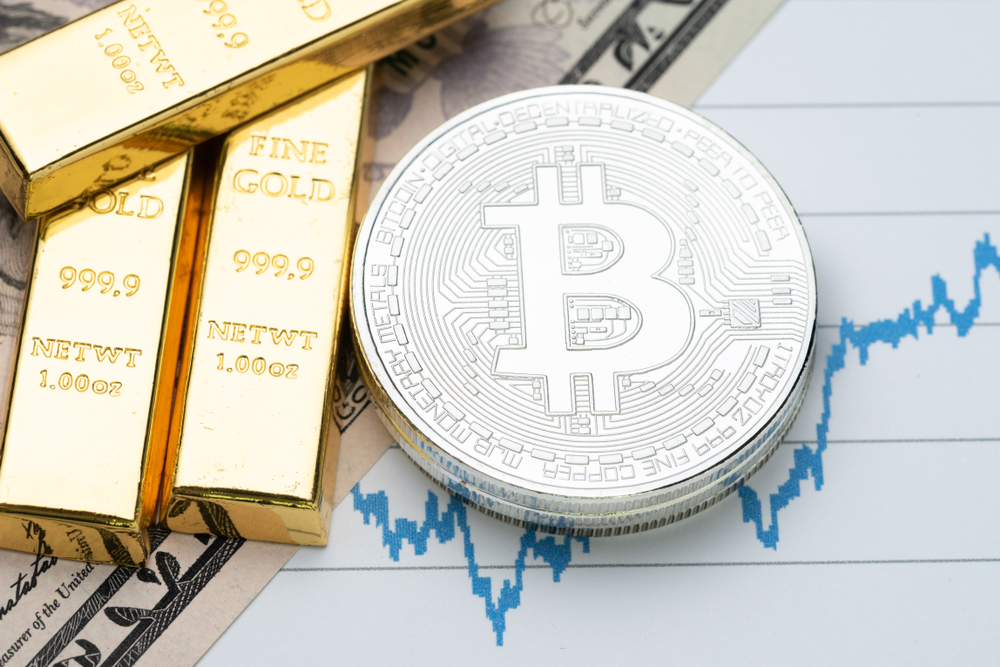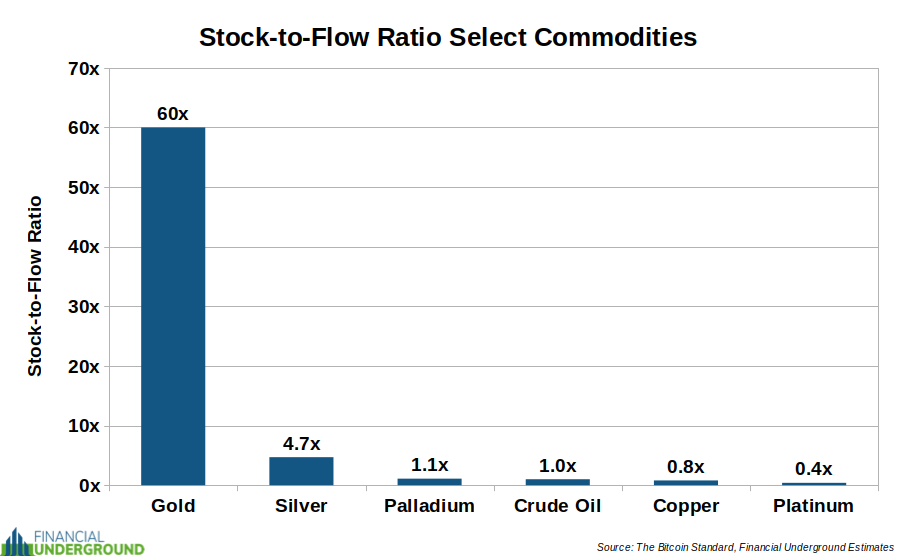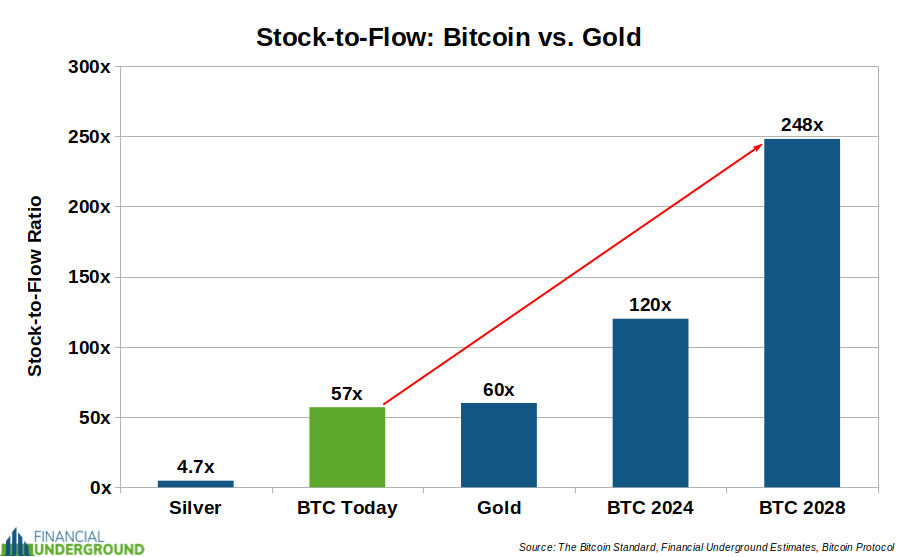Guest Post by Nick Giambruno

French Emperor Napoleon III would use a unique set of aluminum cutlery only for his most honored dinner guests.
Normal guests had to contend with gold utensils.
In the middle of the 19th century, aluminum was more scarce and desirable than even gold.
As a result, aluminum bullion bars found a place among the national treasures of France, and aluminum jewelry became a symbol of the French aristocracy.
Aluminum, known by its atomic number 13 on the periodic table, is a ubiquitous element, yet it mainly exists intertwined in complex chemical compounds and not in its metallic state.
The complex procedure of transforming aluminum compounds into pure aluminum metal was costly, making aluminum harder to produce than gold. The aluminum price at the time reflected that.
In 1852, aluminum hovered around $37 per ounce, significantly more expensive than gold at $20.67 per ounce.
But aluminum’s fate was about to take a dramatic turn towards the end of the 19th century.
A monumental discovery in 1886 made it possible to produce pure aluminum on an enormous scale at a fraction of the previous cost.
Before this groundbreaking finding, global aluminum production was a mere handful of ounces per month.
After the discovery, America’s leading aluminum company manufactured 800 ounces daily. Within two decades, this company, which would later become Alcoa, made over 1.4 million ounces of aluminum daily.
The price of aluminum plummeted from a staggering $550 per pound in 1852 to a mere $12 in 1880. By the dawn of the 20th century, a pound of aluminum cost approximately 20 cents.
In less than a decade and a half, aluminum transitioned from the planet’s most expensive metal to one of the cheapest.
Nowadays, aluminum is no longer a precious metal fit for royal feasts or a country’s national treasure. It has become an everyday item used in soda cans and cooking foil.
Aluminum’s dramatic transformation from a highly prized metal to an inexpensive household material illustrates “hardness”—the most important characteristic of a good money.
Hardness does not mean something that is necessarily tangible or physically hard, like metal. Instead, it means “hard to produce.” By contrast, “easy money” is easy to produce.
The best way to think of hardness is “resistance to debasement,” which helps make it a good store of value—an essential function of money.
Would you want to put your savings into something somebody else can create without effort or cost?
Of course, you wouldn’t.
It would be like storing your life savings in Chuck E. Cheese arcade tokens, airline frequent flyer miles, aluminum, or government fiat currencies.
What is desirable in a good money is something that someone else cannot make easily.
The Stock-to-Flow (S2F) Ratio
The stock-to-flow (S2F) ratio measures an asset’s hardness.
S2F Ratio = Stock / Flow
The “stock” part refers to the amount of something available, like current stockpiles. It’s the supply already mined. It’s available right away.
The “flow” part refers to the new supply added from production and other sources each year.
A high S2F ratio means that annual supply growth is small relative to the existing supply, which indicates a hard asset resistant to debasement.
A low S2F ratio indicates the opposite. A low S2F ratio means new annual production can easily influence the overall supply—and prices. That’s not desirable for something to function as a store of value.
In the chart below, we can see the hardness of various physical commodities.

No other physical commodity comes close to gold’s hardness or resistance to debasement.
Monetary commodities such as gold and silver have higher S2F ratios. On the other hand, industrial commodities have low S2F ratios, typically around 1x.
With an S2F ratio of 60x, it would take about 60 years of the current production rate to equal the existing gold supply.
Another way to think of it is to look at the inverse of the SF ratio, which is the annual production rate relative to existing stockpiles. So, for example, gold’s yearly production is about a trivial 1.7% of its existing stockpiles.
Two things can explain gold’s uniquely high S2F ratio.
First, gold is indestructible.
Gold doesn’t decay or corrode. That means that most gold people produced even thousands of years ago is still around today and contributing to current stockpiles.
Second, gold has a history of thousands of years of production, unlike other metals.
These two factors make gold’s existing stockpiles so large relative to new production. That means nobody can arbitrarily increase the gold supply, which helps make it a neutral store of value. It’s what gives gold unique and unmatched monetary properties among other metals.
It’s important to clarify that hardness is not the same as scarcity. They are related concepts but not the same thing.
For example, platinum and palladium are scarcer than gold but not hard assets. Current production is high relative to existing stockpiles.
Unlike gold, stockpiles of platinum and palladium have not built up over thousands of years. It’s the primary reason why new supply can easily rock the market.
Because of their low S2F ratios, platinum (0.4x) and palladium (1.1x) are even less suitable as money than silver. Their low S2F ratios indicate they are primarily industrial metals, corresponding to how people use them today. Almost nobody uses platinum and palladium as money.
Here’s the main point.
Hardness is the most important characteristic of a good money. All other monetary characteristics are meaningless if the money is easy for someone to produce.
That’s why the history of money is the history of the hardest asset winning and why gold has always reigned supreme.
But now gold has a serious competitor…
Bitcoin’s S2F ratio today is about 57x, slightly below gold’s.
According to its fixed protocol, we know precisely how Bitcoin’s supply will grow in the future.
A key feature is that the new supply gets cut in half every four years, which causes Bitcoin’s hardness to double every four years.
The process where Bitcoin’s new supply is cut in half every four years is known as the “halving”—or what I like to call “quantitative hardening.”
Here’s another way to think of it.
In 2023, the gold market must absorb roughly 117 million troy ounces of new supply.
In 2024 we can expect that the gold market must absorb slightly more, say 119 million troy ounces of new supply.
In subsequent years we can expect the amount of new supply the gold market must absorb to increase gradually.
Bitcoin has the opposite dynamic. The amount of new supply the market must absorb is constantly shrinking.
In 2023, the Bitcoin market must adsorb roughly 328,500 Bitcoin of new supply.
After the halving in May 2024, the Bitcoin market must adsorb roughly an additional 164,250 Bitcoin of new supply each year until the halving in 2028.
After the halving in 2028, the Bitcoin market must adsorb roughly an additional 82,128 Bitcoin of new supply each year until the halving in 2032.
This process of new supply decreases will continue until the year 2140, when the last Bitcoin will be created. That’s when the total Bitcoin supply will reach 21 million. Today it’s about 19.5 million, meaning the vast majority—about 93%—of the total Bitcoin supply has already been created.
That means only 1.5 million more Bitcoin will be created over the next 117 years at a decreasing rate.
In other words, Bitcoin’s supply will only grow about 7% in the next 117 years. By reference, the US money supply has increased by around 35% since March 2020.
Historically, halvings and their massive supply shocks have catalyzed eye-popping Bitcoin bull markets where Bitcoin has skyrocketed 10x (or more).
The next time Bitcoin’s supply growth will be cut in half will be in May 2024—less than eight months from now.
But this coming halving will be very different…
That’s because Bitcoin’s hardness, as measured by the S2F ratio, will be twice that of gold’s when that happens.

That’s how Bitcoin will soon become the hardest money the world has ever known—in less than eight months. And it will keep getting harder as its S2F ratio approaches infinity.
For thousands of years, gold has always been mankind’s hardest money. That is all set to change in a matter of months, and most people have no idea.
I think now is the time to get positioned for this unique moment in monetary history.
Absolute Scarcity
Bitcoin has another unique scarcity attribute. It isn’t just scarce. It is absolutely scarce.
For example, imagine the price of copper going 5x or 10x.
You can be sure that would spur increased production, eventually expanding the copper supply. Of course, the same is true of any other commodity.
That’s why there is a famous saying in mining: “the cure for high prices is high prices.”
The dynamic of higher prices incentivizing more production and ultimately more supply, bringing prices down, exists with every physical commodity. However, gold is the most resistant to this process.
That supply response is why most commodity prices tend to revert around the cost of production over time.
This dynamic is even more profound with money.
When an asset obtains monetary properties, the natural reaction is for people to make more of it—a lot more of it.
This known as the easy money trap.
However, Bitcoin totally defies it because its supply is perfectly inflexible. It’s the only commodity where higher prices cannot induce more supply.
In other words, Bitcoin is the first—and only—monetary asset with a supply entirely unaffected by increased demand.
That is an astonishing and game-changing characteristic.
Here’s the bottom line. Gold and other commodities are scarce, but only Bitcoin is absolutely scarce.
That means the only way Bitcoin can respond to an increase in demand is for the price to go up. Unlike every other commodity, increasing the supply in response to increased demand is not an option.
The market cap for Bitcoin today is around $528 billion.
The market cap for all the mined gold in the world, which took thousands of years to accumulate, is about $12.3 trillion.
That means Bitcoin has a market cap roughly equal to 4.2% of gold’s, even though it is about to surpass—double—gold’s hardness.
Assuming gold stays flat and Bitcoin goes up about 23x, it would have a market cap roughly equal to gold. At that point, a single Bitcoin would be worth over $620,000.
I think that’s a real possibility in the years ahead, though it could happen much sooner as the fiat currency scam continues to collapse at an accelerating rate.
If that sounds outrageous, consider this…
Ten years ago, the Bitcoin price was around $100. Today, it’s roughly 271x that.
Bitcoin has made numerous breathtaking moves to the upside in the past. I think it can do it again, especially as corporations, institutional investors, and even nation states start buying Bitcoin for the first time and as Bitcoin surpasses gold and becomes the hardest money mankind has ever known. Of course, it’s important to remember that past performance does not indicate future results for any investment.
That’s why I’ve just released an urgent PDF report revealing three crucial Bitcoin techniques to ensure you avoid the most common—sometimes fatal—mistakes.
Check it out as soon as possible because it could soon be too late to take action. Click here to get it now.
It is my sincere desire to provide readers of this site with the best unbiased information available, and a forum where it can be discussed openly, as our Founders intended. But it is not easy nor inexpensive to do so, especially when those who wish to prevent us from making the truth known, attack us without mercy on all fronts on a daily basis. So each time you visit the site, I would ask that you consider the value that you receive and have received from The Burning Platform and the community of which you are a vital part. I can't do it all alone, and I need your help and support to keep it alive. Please consider contributing an amount commensurate to the value that you receive from this site and community, or even by becoming a sustaining supporter through periodic contributions. [Burning Platform LLC - PO Box 1520 Kulpsville, PA 19443] or Paypal
-----------------------------------------------------
To donate via Stripe, click here.
-----------------------------------------------------
Use promo code ILMF2, and save up to 66% on all MyPillow purchases. (The Burning Platform benefits when you use this promo code.)





they create trillions of binary numbers per second=worthless
I dont know why, he just dont take delivery of the binary numbers. thats right nothing exists thats why.
Tell us what a “dollar’ is in a bank. Then tell us who can create more of them, however when and however many and do that with a computer. People are so funny. A dollar is a debt instrument and becomes less valuable month after month since its origin while BC has gone up in value like a rocket and has no open doors to ever make it a debt instrument, much like gold, though gold’s price gets manipulated by various interests including the source of dollar expansion and degradation.
XRP will be the future digital money NOT Bitcoin.
Gosh! You are so knowledgeable! Do you sell subscriptions? I’d need a track record first, but boy you sure sound smart.
Off topic but is everybody ok from the emergency alert test message from earlier today?
Nobody’s head exploded off of their shoulders I hope. 😁
My dog ran around the house a few times, and then started shouting “Hail Soros!”
But he seems to have settled down now.
all the arguments for bitcoin appear sound. except for one. were bitcoin to become actual money in practice, either its reliance on the internet makes it vulnerable to hacking and embargo, or the collapse of the internet makes it unavailable.
Someone else said it best:
Bitcoin = a limited amount of worthless tokens.
Software is one of the easiest things to change out there (right after a woman’s mind, I think).
The amount off bitcoin is currently limited. That limit is defined by a program which has been changed multiple times already. There is little reason to think that the miners might not decide at some point that it is in their best interest to increase the quantity of coins that can be mined.
It’s only a matter of time. Many excuses will be made. There are many permanently lost coins, the reward for mining is so low that its not worth continuing unless the algorithm is “updated”, etc.
The limited stock is entirely artificial, and will eventually be broken, and bitcoin will suffer the same fate as aluminum: still useful for some things (avoiding export problems, perhaps), but incredibly cheap.
Bingo!
Aluminum: real
Gold: real
Silver: real
“Bitcoin”: not real
Gosh, Mom, I’m hungry. Please pass the hot ones ‘n’ zeroes.
(Now some twit’s gonna say ya cain’t eat gold.)
Gold works when the lights go out.
Still very unpersuaded.
And those who control the electricity will control Bitcoin ultimately. Nope.
Nick, I hate to break it to you, but you forgot one enormous detail covering silver vs gold… some sources say that we lose from 25 to 50 percent of all annually mined silver through electronics, photography, solar panels, etc. that is not now and cannot yet be recycled, but ends up in landfills, hence your false representation of supply vs demand. Silver is worth more than gold at this moment, even if TPTB undervalue it on paper.
Bitcoin will never be a currency ffs. It is an asset. I’m sure this will get downvoted by the fools, but whatever. If you don’t understand what makes something a good currency, there isn’t much I can do about it.